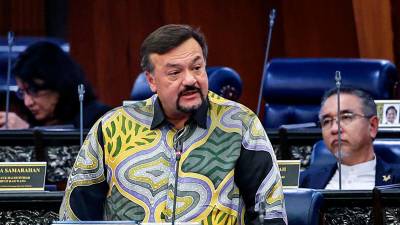KUALA LUMPUR: The government continues intensifying efforts to attract investments into special economic zone development areas to bridge regional gaps throughout the 13th Malaysia Plan period.
Finance Minister II Datuk Seri Amir Hamzah Azizan stated that investment attraction efforts include electrical and electronics industries, natural resources, trade and cargo, and downstream rubber-based industries through multi-party collaboration.
He confirmed that appropriate additional infrastructures will be considered to ensure the competitiveness of these economic zones.
The strategic location of Kedah and Perlis bordering Thailand enhances their role as regional connectivity hubs with the Perlis Inland Port facilitating easier cargo movement.
“For Pahang, Kelantan and Terengganu, the government has set a target to make them among the country’s main food production zones.
“The operation of the ECRL, which is expected to begin in the early period of the 13MP, opens up great opportunities for residents along this line to create new economic activities, especially based on agriculture, food production and the halal industry,” he said during the Dewan Rakyat session.
Amir Hamzah revealed that the government would consider transit-based development zones aligned with the 13MP strategy.
“These states also have great potential in the blue economy, especially fisheries, and shipping which will be further boosted during the 13MP period,” he added.
He confirmed that a detailed blueprint for the Johor-Singapore Special Economic Zone development is currently being prepared.
The JS-SEZ has attracted investment commitments totalling RM1.34 billion with an additional RM78 million in negotiation phase involving seventy companies from multiple countries.
“Through the Johor Talent Development Council, 20,000 high-income job opportunities will be created through direct collaboration between investors, companies, six universities and 15 selected TVET centres in Johor,” he stated.
Sabah and Sarawak will continue receiving focus to achieve more inclusive development balance through various economic initiatives.
Sabah has been identified as a blue economy hub for shipping, fisheries and coastal tourism while Sarawak focuses on energy hub development using hydropower and hydrogen technology.
“The development of the carbon capture, utilisation and storage (CCUS) industry is also given priority for Sarawak, where this effort will attract high-impact investments, high-value job creation and the development of clean technology for the benefit of the people of Sabah and Sarawak,” he concluded. – Bernama
